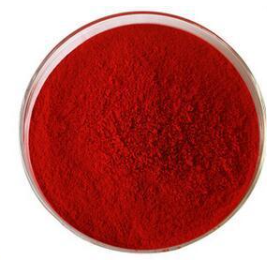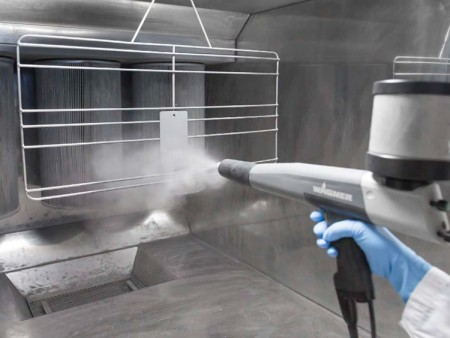In the field of chemical technology applications, the chemical properties of copper powder are applied in various ways. Copper powder serves as both chemical reactants and energy carriers, as well as catalysts. Selection is guided by application requirements and often tailored to different customer needs.


Copper Powder as Catalyst for Pigment Red 177 Production.
Pigment Red 177 exhibits high heat resistance and stability, typically used for mass tinting and coloring of polyolefins and PVC. Copper powder is an essential material in the production of Pigment Red 177, where its primary role is catalysis in the chemical reaction process.


Through experimental testing, copper powder SCP30 has been identified as a catalyst for Pigment Red 177. SCP30 has an optimal particle size range of 30-40 micrometers for catalyzing Pigment Red 177. Larger particles would lead to incomplete catalytic reactions, lower efficiency, and wastage of raw materials. Conversely, smaller particles would prevent effective filtration after catalytic reaction, resulting in impurities in the produced Pigment Red 177.
| Model | Mesh | Particle Size | Ingredient | Covering Powder(cm2/g) |
| SCP30 | 240 | 30-40μm | Copper 99.99% | 1800 |
Copper Powder in the “Ullmann Reaction” in Various Chemical Processes.
In many chemical processes, the “Ullmann reaction” refers to a class of coupling reactions that use copper as a catalyst to form carbon-carbon or carbon-heteroatom (such as carbon-nitrogen, carbon-oxygen) bonds. This reaction typically uses copper powder or copper salts as the catalyst and has important applications in organic synthesis and pharmaceutical chemistry.
In these reactions, copper powder acts to promote the coupling of reactant molecules, increasing reaction efficiency and selectivity. The mechanism typically involves a copper redox cycle, where copper transitions between different oxidation states, facilitating the reaction.

In summary, copper powder in the “Ullmann reaction” refers to a metallic powder that serves as a catalyst in these coupling reactions, helping to form new chemical bonds, and is widely used in organic synthesis and drug development.
In the Rochow process for producing organosilicon/silane compounds, copper powder serves as a catalyst.
In the Rochow process for producing organosilicon/silane compounds, copper powder serves as a catalyst. The Rochow process involves reacting silicon with methyl chloride (typically chloromethane, CH₃Cl) to synthesize organosilicon compounds (particularly methyl chlorosilanes) on an industrial scale. This process forms the foundation of the organosilicon industry, used to manufacture various silanes and their derivatives.
The specific process involves:
- Reactants: Silicon powder (typically metallurgical grade) and chloromethane (CH₃Cl).
- Catalyst: Copper powder, which acts as a catalyst to facilitate the reaction. Copper powder is typically mixed with silicon powder and heated to high temperatures (around 300-350°C) to form a copper-silicon catalytic surface.
- Reaction Process: At high temperatures, chloromethane reacts with silicon in the presence of the copper catalyst, producing a range of organosilicon compounds, primarily methyl chlorosilanes (such as dimethyldichlorosilane, (CH₃)₂SiCl₂, and trimethylchlorosilane, (CH₃)₃SiCl).
- Product Separation: The resulting mixture of products is separated using distillation or other separation techniques to obtain different organosilicon compounds.
In summary, copper powder used in the Rochow process acts as a crucial catalyst, facilitating the reaction of chloromethane with silicon to produce various organosilicon compounds. These compounds find wide applications in the production of silicone rubber, silicone oils, silicone resins, and other organosilicon materials.




